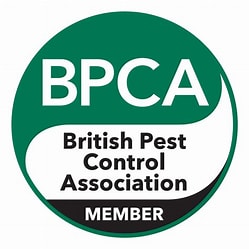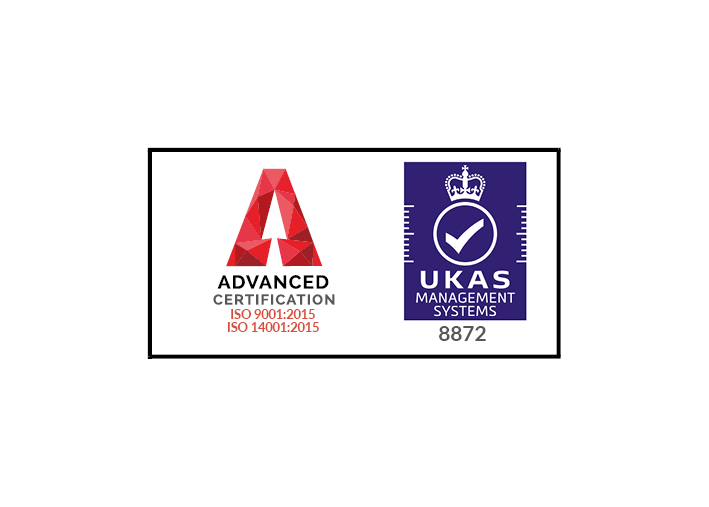2025’s Ultimate Guide to the Best Spray for Bed Bugs: Classic Solutions Meet Modern Science
Dealing with bed bugs can be a nightmare. These pesky little critters invade our homes, leaving us feeling uneasy and desperate for a solution. If you’ve found yourself battling these unwelcome guests, you’re not alone. Many people are searching for the best spray for bed bugs to reclaim their space and peace of mind.
In this article, I’ll guide you through the top sprays on the market that effectively target bed bugs. From natural options to powerful chemical treatments, I’ll cover what works best and why. By the end, you’ll have the knowledge to make an informed choice and tackle your bed bug problem head-on. Let’s dive into the world of bed bug sprays and find the right solution for you.
Understanding Bed Bugs
Bed bugs, known scientifically as Cimex lectularius, thrive in homes and create significant discomfort. They feed primarily on blood, usually during the night, and can reproduce rapidly, making infestations challenging to control.
What Are Bed Bugs?
Bed bugs are small, wingless insects measuring about 4-5 mm in length. Their flat, oval bodies make it easy for them to hide in cracks and crevices. Adult bed bugs are visible to the naked eye and often appear brown or reddish-brown. They can survive for several months without a meal, allowing them to persist in vacant spaces while awaiting new hosts.
Signs of a Bed Bug Infestation
Detecting bed bugs quickly is vital for effective treatment. Common signs of an infestation include:
- Bites: Itchy, red welts may appear on exposed skin after feeding.
- Stains: Dark spots on bedding or furniture indicate faecal matter from bed bugs.
- Shed Skins: As bed bugs grow, they shed their exoskeletons, which can be found in hiding spots.
- Live Bugs: Sightings of adult bed bugs or nymphs during daytime suggest a significant infestation.
Addressing these signs promptly can prevent a larger problem, making it essential to stay vigilant.
Factors to Consider When Choosing the Best Spray for Bed Bugs
Selecting the right spray for bed bugs involves examining various critical factors. Focusing on these aspects ensures effectiveness against infestations while maintaining safety.
Active Ingredients
Active ingredients play a significant role in a spray’s effectiveness. Some common ingredients to look for include:
- Pyrethroids: These synthetic compounds target the nervous system of bed bugs. They offer quick knockdown effects but may lead to resistance if used repeatedly.
- Neonicotinoids: These disrupt neurotransmitter functions, providing a longer residual effect. They remain effective against resistant bugs when used correctly.
- Essential oils: Natural sprays may utilise oils like peppermint or tea tree, which have been shown to repel bed bugs. While less potent, they can complement other treatments.
- Insect growth regulators (IGRs): IGRs prevent bed bugs from maturing into adults. This breaks the reproductive cycle, aiding long-term control.
Always read labels for specific ingredient lists and their concentrations, as these directly impact efficacy against the pest.
Safety for Humans and Pets
Safety is paramount when choosing a bed bug spray. It’s crucial to ensure the chosen product poses minimal risk to humans and pets. Here are some considerations:
- Non-toxic options: I prefer sprays containing natural ingredients like essential oils, which typically lack harmful side effects for household members.
- Compliance with safety standards: Look for products that meet regulatory standards such as those set by the UK Health and Safety Executive, ensuring they’re safe for residential use.
- Application instructions: Always follow application guidelines to minimize exposure risks. Ventilate the area during and after application, and restrict access until treated surfaces dry.
- Protection for pets: Ensure products specifically mention safety for pets. Some ingredients harmful to insects can adversely affect cats and dogs.
Prioritising these safety factors leads to a balanced approach in tackling bed bug infestations without compromising the health of occupants.
Top Recommendations for the Best Spray for Bed Bugs
I’ve curated a selection of the most effective bed bug sprays available. Each product has been chosen based on its effectiveness, safety, and user reviews. Here’s an overview of my top recommendations.
Product 1: Bed Bug Buster Spray
Bed Bug Buster Spray offers a potent formula containing soybean oil and potassium salts, effective in killing bed bugs on contact. This spray’s unique blend targets both adult bugs and their eggs, ensuring comprehensive treatment. Users report significant reductions in infestations within days. Its non-toxic ingredients make it safe for use around children and pets, making it a solid choice for households prioritising safety. The 500ml bottle retails for approximately £15.
Product 2: Bug Bomb Ultra
Bug Bomb Ultra features a combination of pyrethroids and neonicotinoids, known for their effectiveness against bed bugs. This product provides residual protection, meaning it continues to kill bed bugs even after application. Users appreciate its ease of use; simply spray in infested areas and allow it to dry. Reports indicate high efficacy, with many users experiencing results within one week. The 600ml can is priced around £20, offering excellent value for serious infestations.
Product 3: Eco-Friendly Bed Bug Spray
Eco-Friendly Bed Bug Spray utilises essential oils like peppermint and clove, providing a natural solution for bed bug control. Its plant-based formula tackles both bed bugs and their eggs efficiently. Many find this spray effective for light infestations and appreciate its pleasant aroma. Although it may not be as powerful as chemical alternatives, it remains a popular choice for those seeking a safer option. Priced at £18 for a 500ml bottle, it’s an excellent choice for eco-conscious consumers.
How to Effectively Use Bed Bug Spray
Using bed bug spray correctly maximises its effectiveness and ensures safety. Following the right steps helps eliminate these pests and protects your home.
Preparation Before Application
Preparation is crucial before applying bed bug spray. Start by removing items from the area, such as bedding, clothing, and toys. Ensure you wash and dry these items on high heat to eliminate any hidden bed bugs or eggs. Next, vacuum carpets, floors, and furniture, focusing on seams and crevices where bed bugs often hide. After vacuuming, dispose of the vacuum bag or empty the canister outside immediately to prevent reinfestation. Finally, read the product label carefully. Understanding the specific instructions for the spray ensures safe and effective application.
Application Techniques
Application techniques impact the success of bed bug sprays. When spraying, aim for cracks and crevices where bed bugs hide, such as along baseboards, behind furniture, and inside mattress seams. Hold the spray nozzle approximately 15 to 30 centimetres from the surface to achieve even coverage. Apply light, even coats rather than saturating areas, as excess moisture can lead to issues like mould or odour. Pay attention to any recommended drying times on the label before placing treated items back into the area. Additionally, repeat the application as needed, usually every 7 to 14 days, to ensure thorough eradication of any remaining bed bugs and their eggs. Always keep pets and children away from treated areas until they’re completely dry to ensure their safety.
Key Takeaways
- Understanding Bed Bugs: Bed bugs are small, blood-feeding insects that can reproduce rapidly, making infestations challenging to manage. Early detection is crucial for effective treatment.
- Signs of Infestation: Look for signs like itchy bites, dark stains on bedding, shed skins, and visible live bugs to identify bed bug issues promptly.
- Choosing the Right Spray: Consider active ingredients such as pyrethroids, neonicotinoids, essential oils, and insect growth regulators (IGRs) for effective bed bug control.
- Safety Considerations: Prioritise sprays that are non-toxic and compliant with safety regulations to ensure safety for humans and pets during and after application.
- Top Product Recommendations: Products like Bed Bug Buster Spray, Bug Bomb Ultra, and Eco-Friendly Bed Bug Spray offer various approaches, balancing effectiveness with safety based on user needs and preferences.
- Application Techniques: Proper preparation and application techniques, including targeting cracks and crevices and adhering to product guidelines, enhance the effectiveness of bed bug sprays while ensuring safety.
Conclusion
Finding the right spray for bed bugs can make all the difference in reclaiming your home from these pesky intruders. With the right knowledge and products at your disposal I’m confident you can tackle any infestation effectively. It’s crucial to consider both effectiveness and safety when choosing a spray. Whether you opt for a chemical solution or a natural alternative there’s a product out there that fits your needs.
Remember to follow application instructions closely and maintain a consistent treatment schedule. By taking these steps you’ll be well on your way to a bed bug-free environment. Don’t let these unwelcome guests disrupt your peace any longer.
Frequently Asked Questions
What are bed bugs?
Bed bugs, scientifically known as Cimex lectularius, are small, wingless insects that feed on the blood of humans and animals. They are roughly the size of an apple seed, brown or reddish in colour, and can reproduce quickly, leading to significant infestations if not controlled.
How can I identify a bed bug infestation?
Common signs of a bed bug infestation include bites on the skin, small blood stains on bedding, shed skins, and actual sightings of the bugs in or around sleeping areas. Early detection is crucial for effective treatment.
What are the best types of sprays for bed bugs?
The best bed bug sprays vary but generally include options with effective active ingredients like pyrethroids, neonicotinoids, and essential oils. Popular recommendations include Bed Bug Buster Spray, Bug Bomb Ultra, and Eco-Friendly Bed Bug Spray.
How do I choose a safe bed bug spray?
When selecting a bed bug spray, consider products with non-toxic ingredients, especially if you have children or pets. Also, check for compliance with safety standards and read labels to understand any potential hazards and proper application methods.
How should I prepare before using bed bug spray?
Before applying bed bug spray, remove items from the area that may harbour bugs, wash fabrics on high heat, and vacuum thoroughly to eliminate any hidden bugs or eggs. This preparation enhances the effectiveness of the treatment.
What application techniques should I follow for bed bug sprays?
When applying bed bug spray, target cracks, crevices, and areas where bugs are likely to hide. Maintain the recommended distance while spraying, apply light and even coats, and be sure to allow sufficient drying time as indicated on the label.
How often should I reapply bed bug spray?
For thorough eradication, it is recommended to reapply bed bug spray every 7 to 14 days, as specified in the product instructions. This frequency helps to ensure that any remaining bugs or newly hatched eggs are effectively treated.




